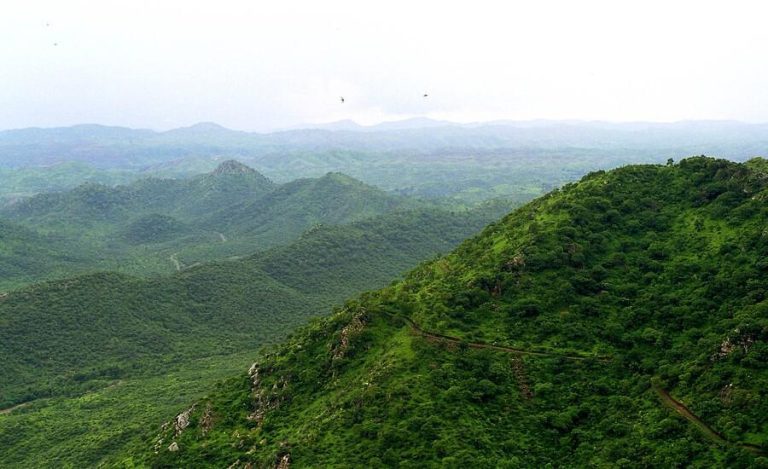Deep inside the lush greenery of Tamil Nadu’s Anamalai Tiger Reserve (ATR), a silent invader once threatened the very fabric of the ecosystem – Lantana camara, a hardy shrub brought from South America by the British as an ornamental plant. Over time, this deceptively pretty weed began to choke native vegetation, deplete groundwater, and block the movement of wildlife. Today, it covers nearly 54% of India’s forests, making it one of the country’s most dangerous invasive species.
Yet, in a remarkable twist of fate, what was once called a “forest enemy” is now a lifeline for hundreds of tribal families – thanks to a visionary initiative led by officers of the Indian Forest Service and the creativity of local artisans.
Indian Masterminds interacted with 2013-batch Indian Forest Service (IFS) officer D. Venkatesh, Field Director of ATR, to learn more about this transformative initiative.
A New Beginning in Anamalai Tiger Reserve
The transformation began in the heart of Coimbatore’s Anamalai Tiger Reserve, where tribal artisans, especially from the Pulaiyar community of the Lower Poonachi settlement in Valparai Range, started giving Lantana a new identity. What once strangled native flora is now being sculpted into elegant furniture, animal sculptures, and eco-friendly fuel.
The initiative, supported by forest officials and NGOs, trained around 10 tribal families in furniture-making in 2024. Using the stems of matured lantana collected from the forest, artisans now craft stools, tables, bookshelves, cots, and even large sofas.
“One big armchair requires a bundle of lantana weighing around 30 kg. We collect the stems, boil them, peel off the bark, and then use them to create furniture,” shared one artisan proudly, as he showcased a beautifully crafted chair made from the same plant that once destroyed his forest home.
From Weed to Wonder: Sculptures Crossing Borders
The creativity of these artisans soon reached international platforms. Under the brand Jini Siva, a tribal women’s group began crafting magnificent elephant and deer sculptures from Lantana. These stunning pieces, standing 8–9 feet tall and made from nearly 300 kg of grass, are now being exported to London and New York, fetching up to ₹10 lakh (1 million rupees) each.
“In just six months, we cleared 350 acres of forest from Lantana and provided employment to 350 women,” said Mr Venkatesh. “Our artisans have not only doubled their income but also helped the forest breathe again.”
This initiative has already generated over ₹50 lakh in earnings and created permanent livelihoods for more than 300 tribal women. For the local communities, the invasive weed that once destroyed their forests has now become their greatest economic opportunity.
- A single elephant sculpture, standing 8-9 feet tall and made from 300 kg of lantana, takes 6-8 artisans around 40-45 days to complete.
- Such pieces can fetch up to 1 million rupees abroad, effectively doubling the income of the artisans involved.
“To ensure sustainability, artisans participate in exhibitions to popularize the concept and create awareness about its significance,” said Mr Venkatesh.
Lantana as Green Energy: A Sustainable Alternative
Beyond art and furniture, the forest department under forest department’s guidance found yet another innovative use for the grass – green energy. In Erode district’s Hasanur forest area, local tribal leader Siruvadivel, with official support, launched India’s first lantana fuel factory. Here, harvested lantana is converted into briquettes – a clean, efficient fuel source that burns like coal.
“Coal sells for ₹9 a kilo. We sell Lantana briquettes for ₹8 a kilo, making a decent profit of ₹4 – ₹5 per kilo annually,” explained IFS Venkatesh. “Each briquette carries about 4900 calories of energy, which makes it a great green alternative.”
In just six months, the ATR team cleared 500 tons of lantana from the forests while ensuring a steady income for tribal women who collect, dry, and process the grass.
Restoring Forests, Reclaiming Livelihoods
According to forest officials, around 20% of Anamalai Tiger Reserve is still affected by lantana. But efforts like these are slowly reversing the damage. Clearing one acre of moderately dense lantana requires 30 human workdays, and every cleared patch allows native species to return – helping biodiversity heal naturally.
“Once a patch of forest is cleared of lantana, friendly species reclaim the space. This is how we fight back – not by burning or destroying, but by transforming,” said IFS Venkatesh.
To make the initiative sustainable, the ATR administration is also setting up official marketing platforms at Attakatti, Aliyar Check Post, and Top Slip, while promoting the products online through official websites and social media.
Empowerment through Innovation
Former Field Director S. Ramasubramanian, who also nurtured the initiative, emphasized the long-term vision: “We are not just training artisans; we are creating entrepreneurs. Through exhibitions, innovation, and awareness, we’re ensuring this becomes a self-sustaining model.”
Indeed, from furniture to fuel, this multi-dimensional effort has turned a crisis into an opportunity. What began as an ecological challenge has blossomed into a model for green livelihood and forest restoration.
A Lesson in Transformation
The story of Lantana in Tamil Nadu is more than an environmental success – it’s a tale of resilience, creativity, and hope. Through the leadership of dedicated officers like D. Venkatesh, IFS, and the unwavering spirit of tribal communities, a dangerous invasive weed has been reborn as a symbol of sustainability.
As Mr Venkatesh aptly puts it, “Every piece of furniture, every sculpture, every briquette – it’s not just art or energy. It’s a story of our forests reclaiming life, and our people reclaiming dignity.”
































